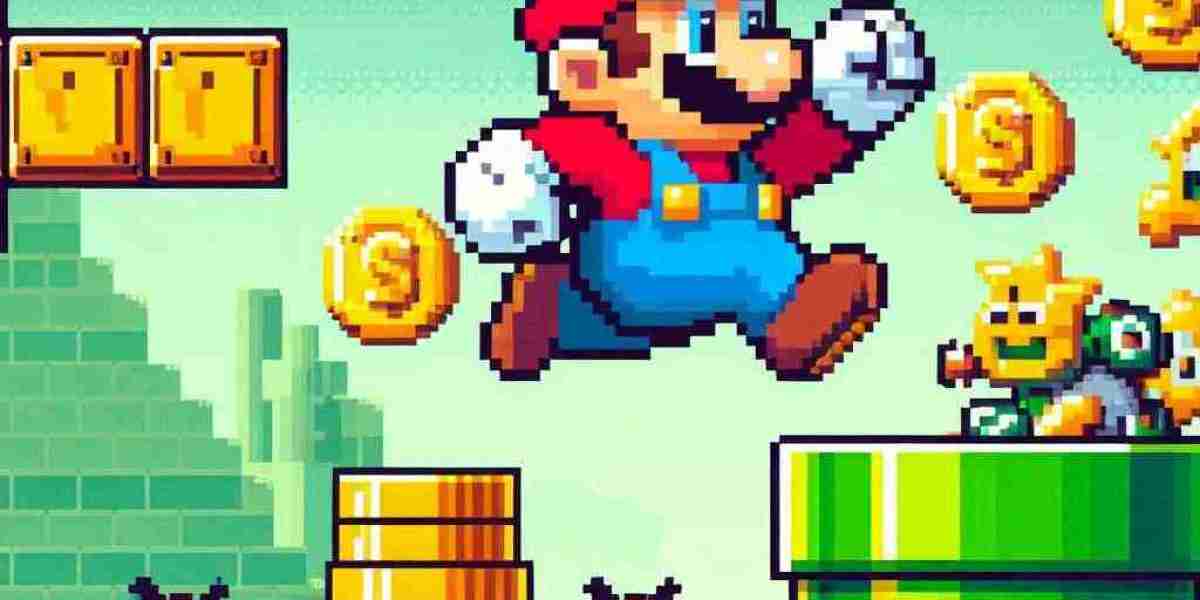Introduction
When it comes to video games, few characters are as universally recognized and beloved as Super Mario. Since his debut in 1981 in "Donkey Kong" and the iconic launch of "Super Mario Bros." in 1985, Mario has not only become the face of Nintendo but also a symbol of the gaming industry as a whole. With over four decades of adventures under his belt, Mario has transcended the realm of video games to become a global cultural icon. But what is it about this Italian plumber that has captured the hearts of millions?
The Origins of Mario: Humble Beginnings
Mario's journey began with a simple yet innovative game mechanic. In "Donkey Kong," he wasn’t even called Mario; he was known as "Jumpman." However, this game laid the foundation for what would become one of the most successful franchises in gaming history. The release of "Super Mario Bros." on the Nintendo Entertainment System (NES) in 1985 was a game-changer. It introduced players to a vibrant, imaginative world filled with challenging levels, hidden secrets, and a simple yet engaging storyline: save Princess Peach from the evil Bowser.
The Evolution of the Super Mario Franchise
What makes the Super Mario series truly special is its ability to innovate while maintaining its core identity. Each new title introduces fresh gameplay mechanics, creative level designs, and unique worlds, all while staying true to the essence of what makes Mario fun. From the 3D revolution of "Super Mario 64" to the gravity-defying antics of "Super Mario Galaxy," the franchise has consistently pushed the boundaries of what’s possible in a platformer.
In recent years, games like "Super Mario Odyssey" have continued this tradition, offering vast, open worlds to explore, coupled with inventive power-ups and the timeless platforming action fans have come to love. This balance between innovation and nostalgia is a key factor in Mario's enduring popularity.
Cultural Impact: More Than Just a Game
Super Mario is more than just a video game character; he’s a cultural phenomenon. The red hat and mustache are instantly recognizable, even to those who have never picked up a controller. Mario has appeared in cartoons, movies, comics, and a wide array of merchandise. His influence extends beyond the gaming community, symbolizing the fun, creativity, and pure joy that video games can bring.
Moreover, Mario's impact on game design is immeasurable. Many of today’s game developers cite the Mario series as a major influence on their work. The precise controls, imaginative level design, and intuitive gameplay have set a standard that many games strive to achieve.
Why Mario Endures: The Power of Simplicity
One of the reasons Mario has remained relevant for so long is his simplicity. The basic premise—jump, run, and explore—resonates with players of all ages. The games are easy to pick up but difficult to master, offering a challenge for both newcomers and seasoned gamers. This accessibility has allowed Mario to appeal to a broad audience, from children experiencing their first video game to adults who have been playing since the NES era.
Looking Ahead: The Future of Super Mario
As we look to the future, it’s clear that Mario isn’t going anywhere. With each new generation of consoles, Mario evolves, finding new ways to entertain and challenge players. Whether it’s through traditional platformers, sports spin-offs, or new ventures into augmented reality, the Super Mario franchise continues to grow and adapt.
The upcoming titles and innovations in gaming technology promise even more exciting adventures for Mario and his friends. And with Nintendo’s commitment to quality and creativity, there’s no doubt that Mario will continue to be a beloved figure in the gaming world for years to come.
Conclusion
Super Mario’s journey from a pixelated plumber to a global icon is a testament to the power of great game design, creativity, and a little bit of magic. He’s not just a character; he’s a symbol of the joy and wonder that video games can bring. As long as there are Goombas to stomp and princesses to save, Mario will remain a cherished part of our cultural landscape. So here’s to many more years of adventures in the Mushroom Kingdom—let’s-a go!









